A Feasibility Study for Using Fishnet to Protect Offshore Wind Turbine Monopile Foundations from Damage by Scouring
Abstract
:1. Introduction
2. Working Mechanism of “Fishnet”
3. Development of Numerical Models
4. Numerical Study
4.1. Effectiveness Investigation
4.2. Optimization of “Fishnet” Technology
5. Laboratory Tests
5.1. Experimental Apparatus
5.2. Testing Results
6. Conclusions
- (1)
- The fishnet is low in cost and convenient to install at the site; for example, it can be readily tied to the monopile foundation by a frogman. This means that the maintenance cost of the monopile foundation for offshore wind turbines can be significantly reduced after using such a technique.
- (2)
- After using the fishnet device, the local streamlines near fishnets are significantly disturbed, which consumes the energy of the downflows and the vortices around the monopile foundation.
- (3)
- Both numerical studies and laboratory tests showed that the “fishnet” technology can indeed reduce the scouring, and its contribution to erosion reduction can be further improved by performing parameter optimization. The numerical study showed that the maximum shear stress on the seabed in the vicinity of the monopile foundation could be reduced by about 14%, while the laboratory experiment showed that the largest erosion depth around the monopile foundation could be reduced by about 38%.
Author Contributions
Funding
Conflicts of Interest
References
- MarStrach-Sonsalla, M.; Muskulus, M. Prospects of Floating Wind Energy. Int. J. Offshore Polar Eng. 2016, 26, 81–87. [Google Scholar] [CrossRef]
- Anastasia, I.; Andrew, A.; Feargal, B. Parametric CAPEX, OPEX, and LCOE expressions for offshore wind farms based on global deployment parameters. Energy Sources Part B Econ. Plan. Policy 2018, 13, 281–290. [Google Scholar]
- Yang, W.; Tian, W. Concept Research of a Countermeasure Device for Preventing Scour around the Monopile Foundations of Offshore Wind Turbines. Energies 2018, 11, 2593. [Google Scholar] [CrossRef]
- Chiew, Y.M. Mechanics of riprap failure at bridge piers. J. Hydraul. Eng. 1995, 121, 635–643. [Google Scholar] [CrossRef]
- Larsen, T.J.; Madsen, H.A.; Larsen, G.C.; Hansen, K.S. Validation of the dynamic wake meander model for loads and power production in the Egmond aan Zee wind farm. Wind Energy 2013, 16, 605–624. [Google Scholar] [CrossRef]
- Tafarojnoruz, A.; Gaudio, R.; Calomino, F. Evaluation of flow-altering countermeasures against bridge pier scour. J. Hydraul. Eng. 2012, 138, 297–305. [Google Scholar] [CrossRef]
- Mostafa, Y.E. Effect of local and global scour on lateral response of single piles in different soil conditions. Engineering 2012, 4, 297–306. [Google Scholar] [CrossRef]
- Froehlich, D.C. Protecting bridge piers with loose rock riprap. J. Appl. Water Eng. Res. 2013, 1, 39–57. [Google Scholar] [CrossRef]
- Melville, B.W.; Hadfield, A.C. Use of sacrificial piles as pier scour countermeasures. J. Hydraul. Eng. 1999, 125, 1221–1224. [Google Scholar] [CrossRef]
- Moreno, M.; Birjukova, O.; Grimaldi, C.; Gaudio, R.; Cardoso, A.H. Experimental study on local scouring at pile-supported piers. J. Acta Geophys. 2017, 65, 1–11. [Google Scholar] [CrossRef]
- Zarrati, A.R.; Gholami, H.; Mashahir, M.B. Application of collar to control scouring around rectangular bridge piers. J. Hydraul. Res. 2004, 42, 97–103. [Google Scholar] [CrossRef]
- Brand, M.W.; Dewoolkar, M.M.; Rizzo, D.M. Use of sacrificial embankments to minimize bridge damage from scour during extreme flow events. Nat. Hazards 2017, 87, 1469–1487. [Google Scholar] [CrossRef]
- Haque, M.A.; Rahman, M.M.; Islam, G.M.T.; Huassin, M.A. Scour mitigation at bridge piers using sacrificial piles. Int. J. Sediment Res. 2007, 22, 49–59. [Google Scholar]
- Khassaf, S.I.; Obied, N.A. Experimental Study: Bridge Pier Protection against Local Scour Using Guide Panels; IOP Conference Series: Materials Science and Engineering; IOP Publishing: Bristol, UK, 2018; Volume 433, p. 012006. [Google Scholar]
- Kumar, V.; Raju, K.G.R.; Vittal, N. Reduction of local scour around bridge piers using slots and collars. J. Hydraul. Eng. 1999, 125, 1302–1305. [Google Scholar] [CrossRef]
- Vijayasree, B.A.; Eldho, T.I.; Mazumder, B.S.; Viswanadham, B.V.S. Effectiveness of combinations of raft foundation with aprons as a protection measure against bridge pier scour. Sādhanā 2018, 43, 21. [Google Scholar] [CrossRef]
- Whitehouse, R.J.S.; Brown, A.; Audenaert, S.; Bolle, A.; de Schoesitter, P.; Haerens, P.; Baelus, L.; Troch, P.A.; das Neves, L.; Ferradosa, T.; et al. Optimising scour protection stability at offshore foundations. In Proceeding of the 7th International Conference on Scour and Erosion, Perth, Australia, 2–4 December 2014; pp. 2–4. [Google Scholar]
- Adivi, E.G.; Bajestan, M.S.; Kermannezhad, J. Riprap sizing for scour protection at river confluence. J. Hydraul. Struct. 2016, 2, 1–11. [Google Scholar]
- Lim, F.H.; Chiew, Y.M. Parametric study of riprap failure around bridge piers. J. Hydraul. Res. 2001, 39, 61–72. [Google Scholar] [CrossRef]
- Grüne, J.; Sparboom, U.; Schmidt-Koppenhagen, R.; Wang, Z.; Oumeraci, H. Stability tests of geotextile sand containers for monopile scour protection. In Coastal Engineering 2006: Proceedings of the 30th International Conference (In Volumes 5); World Scientific Publishing Co. Pte Ltd.: Singapore, 2007; pp. 5093–5105. [Google Scholar]
- Dey, S.; Sumer, B.M.; Fredsøe, J. Control of scour at vertical circular piles under waves and current. J. Hydraul. Eng. 2006, 132, 270–279. [Google Scholar] [CrossRef]
- Tafarojnoruz, A.; Gaudio, R.; Dey, S. Flow-altering countermeasures against scour at bridge piers: A review. J. Hydraul. Res. 2010, 48, 441–452. [Google Scholar] [CrossRef]
- Soulsby, R. Dynamics of Marine Sands: A Manual for Practical Applications; Thomas Telford: London, UK, 1997. [Google Scholar]
- Ansys-Fluent Theory Guide. Available online: 6Hhttps://www.pdfdrive.com/ansys-fluent-theory-guide-d7803205.html (accessed on 2 July 2019).
- Hunt, J.C.R.; Wray, A.A.; Moin, P. Eddies, streams, and convergence zones in turbulent flows. In Proceedings of the 1988 Summer Program, NASA Ames, Stanford, CA, USA, 27 June–22 July 1988. [Google Scholar]

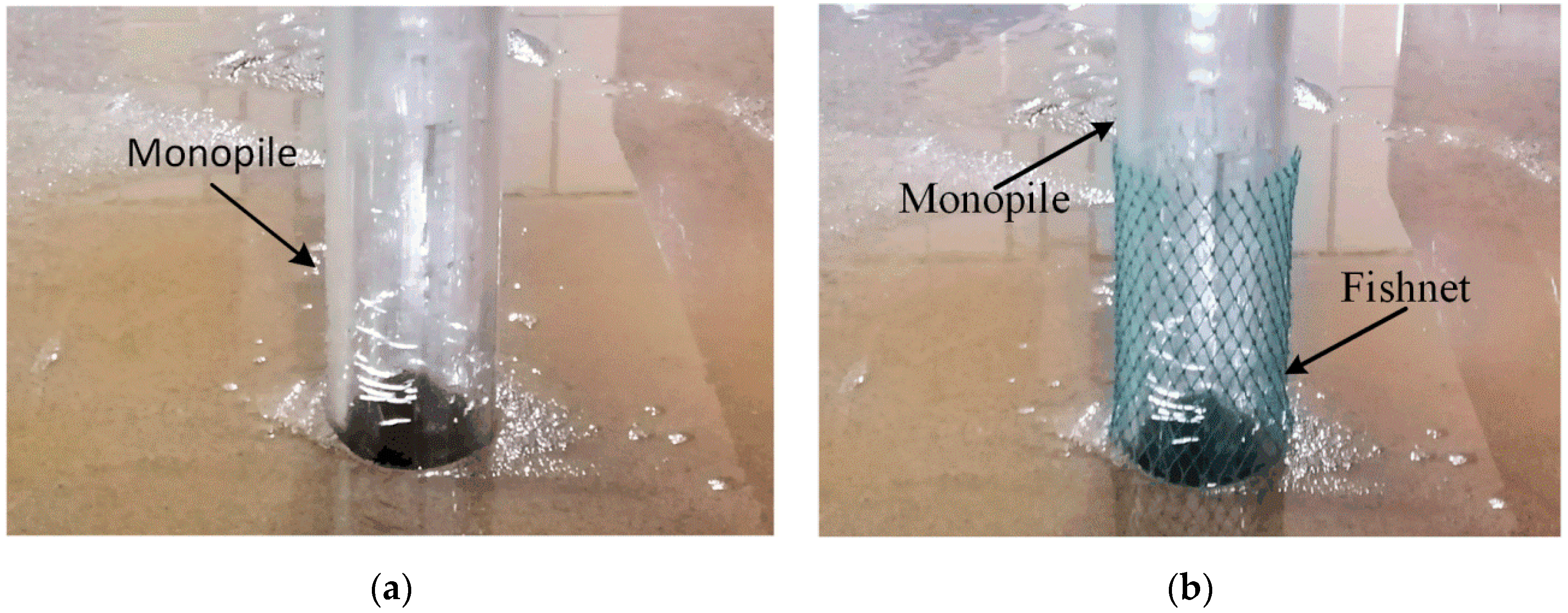

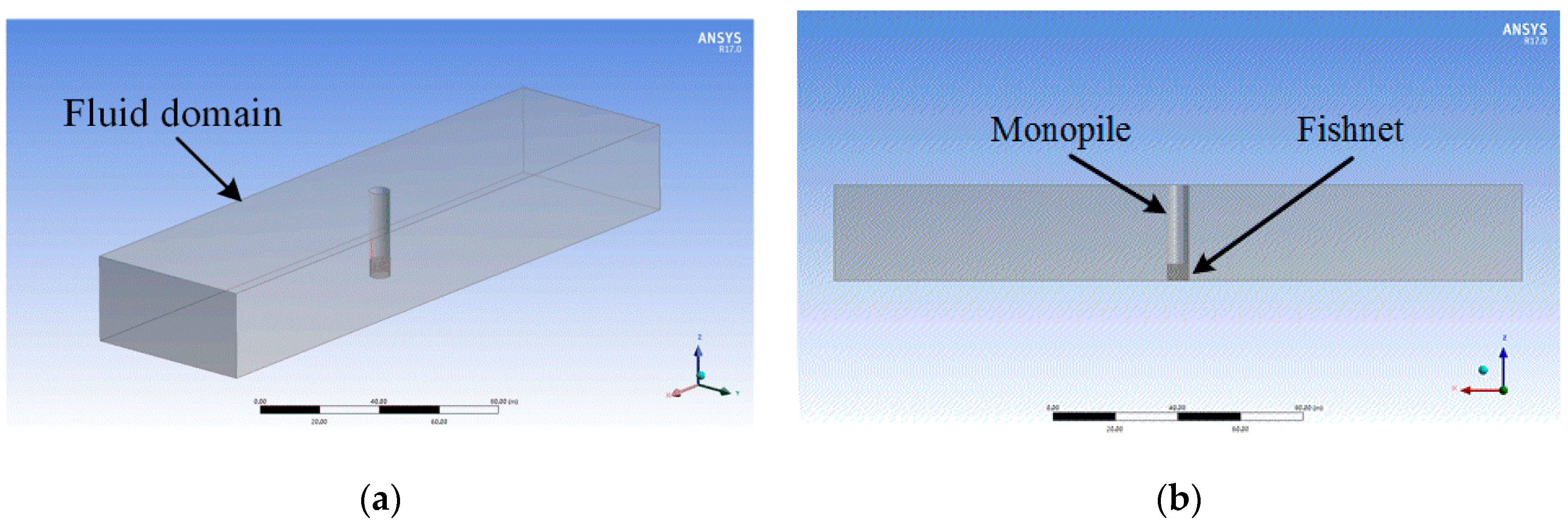
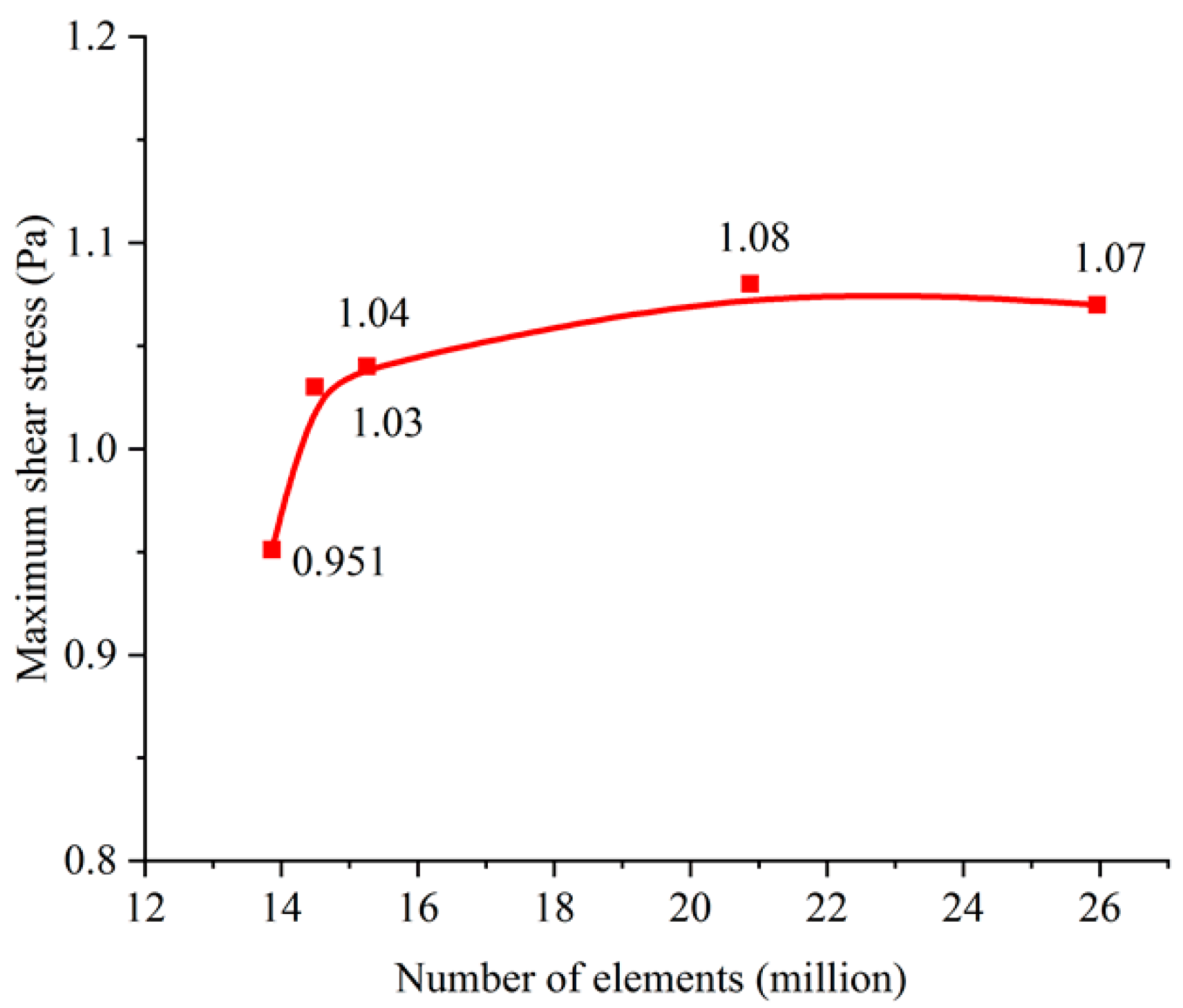

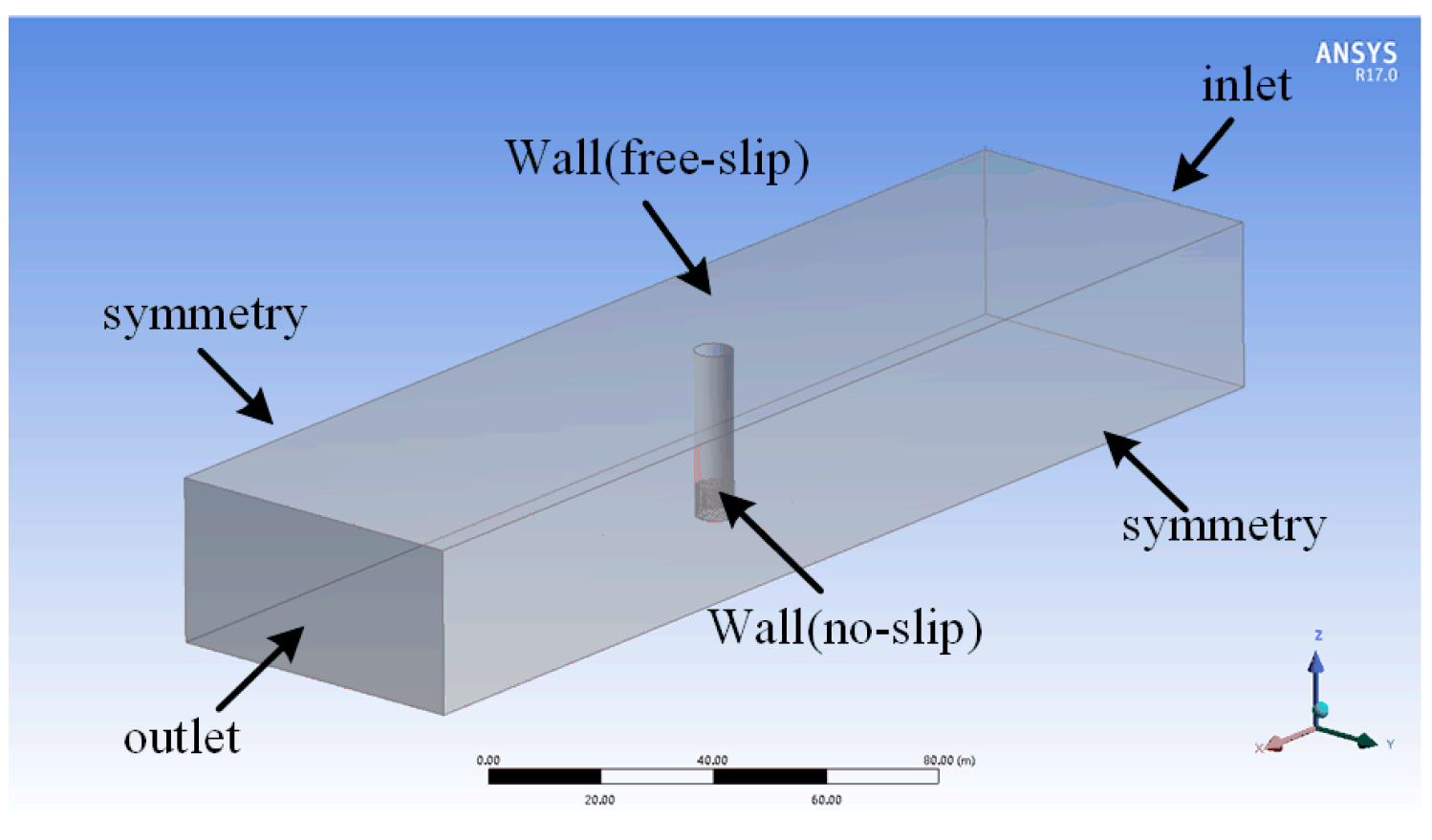
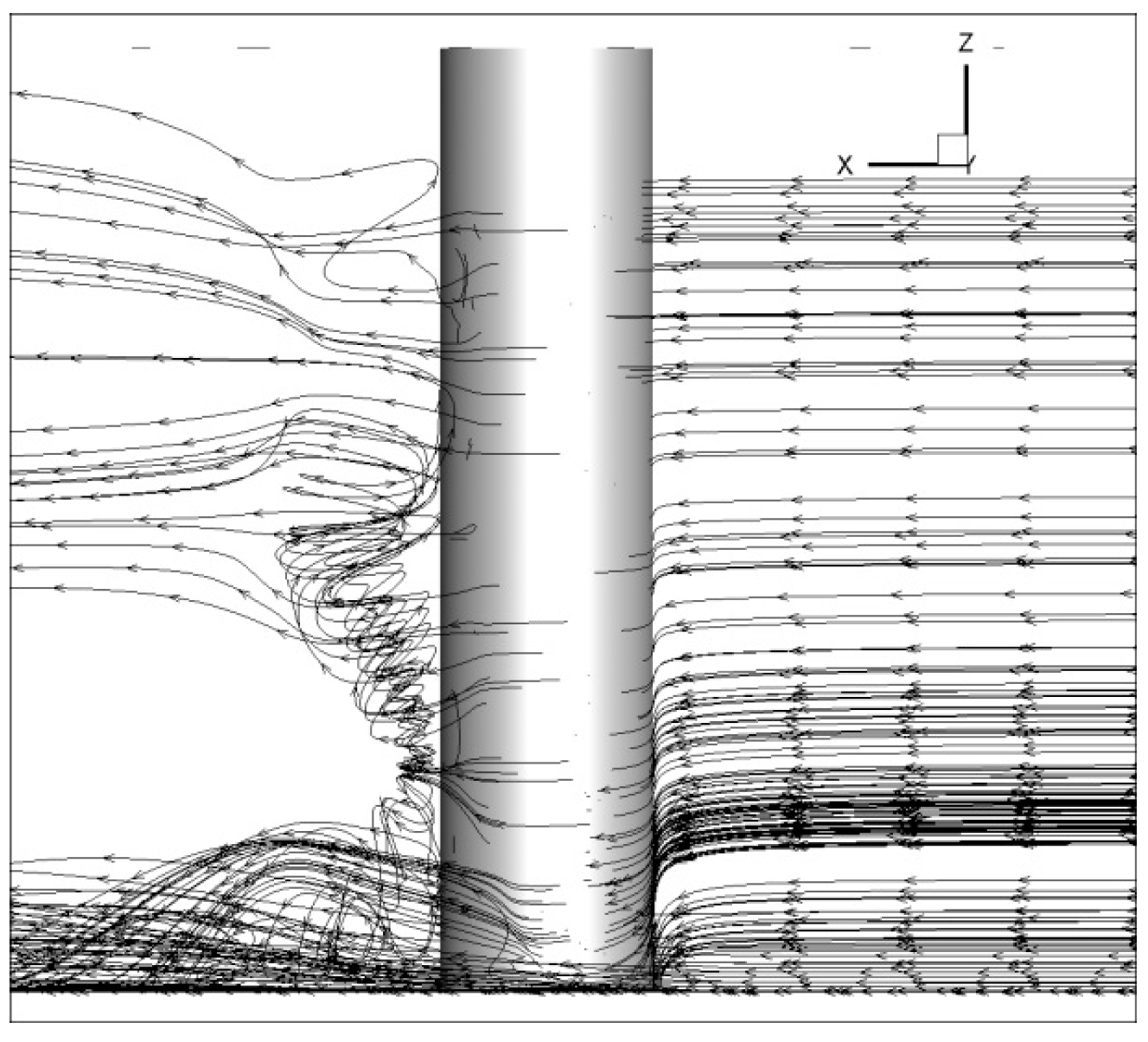
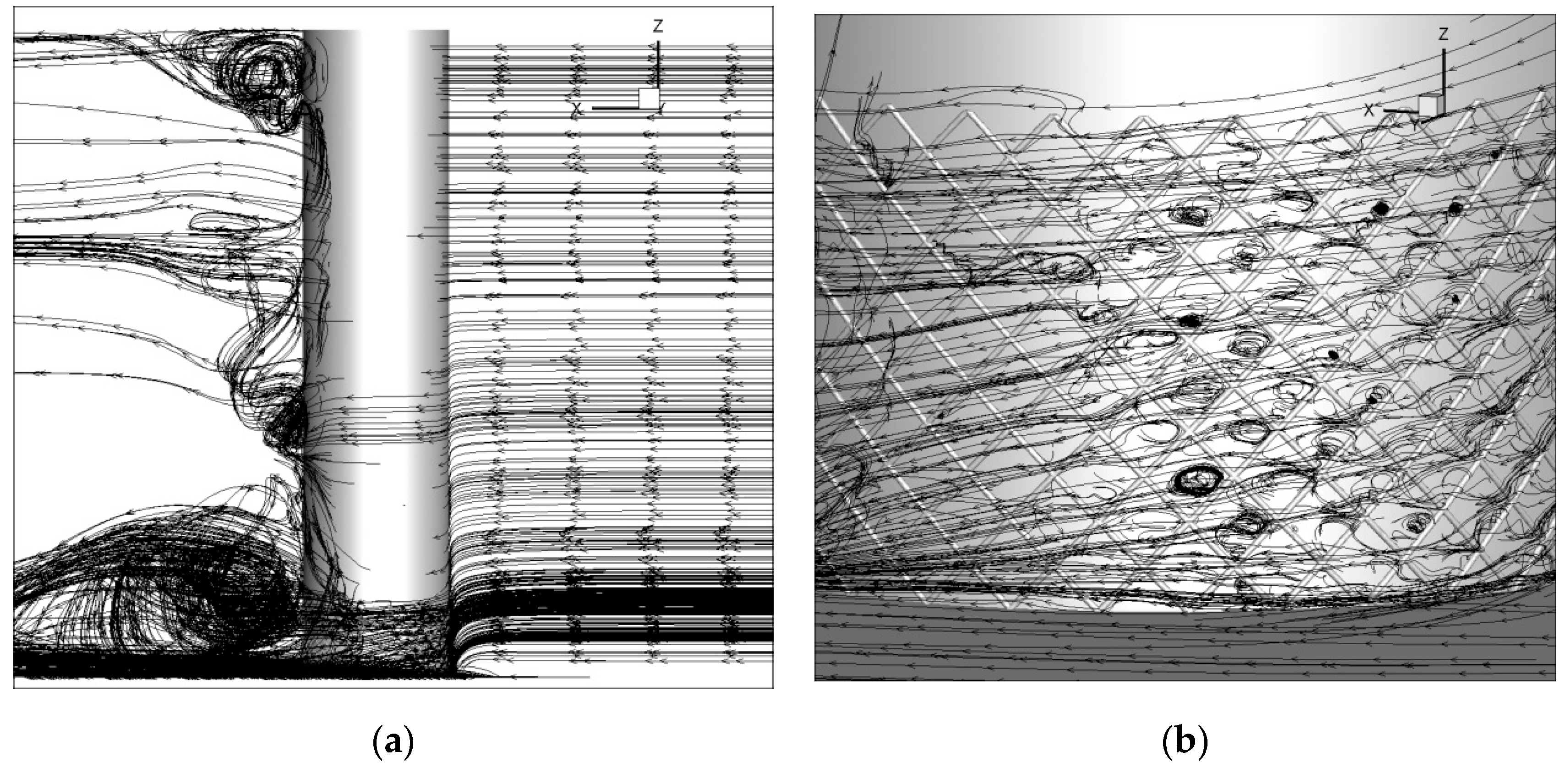
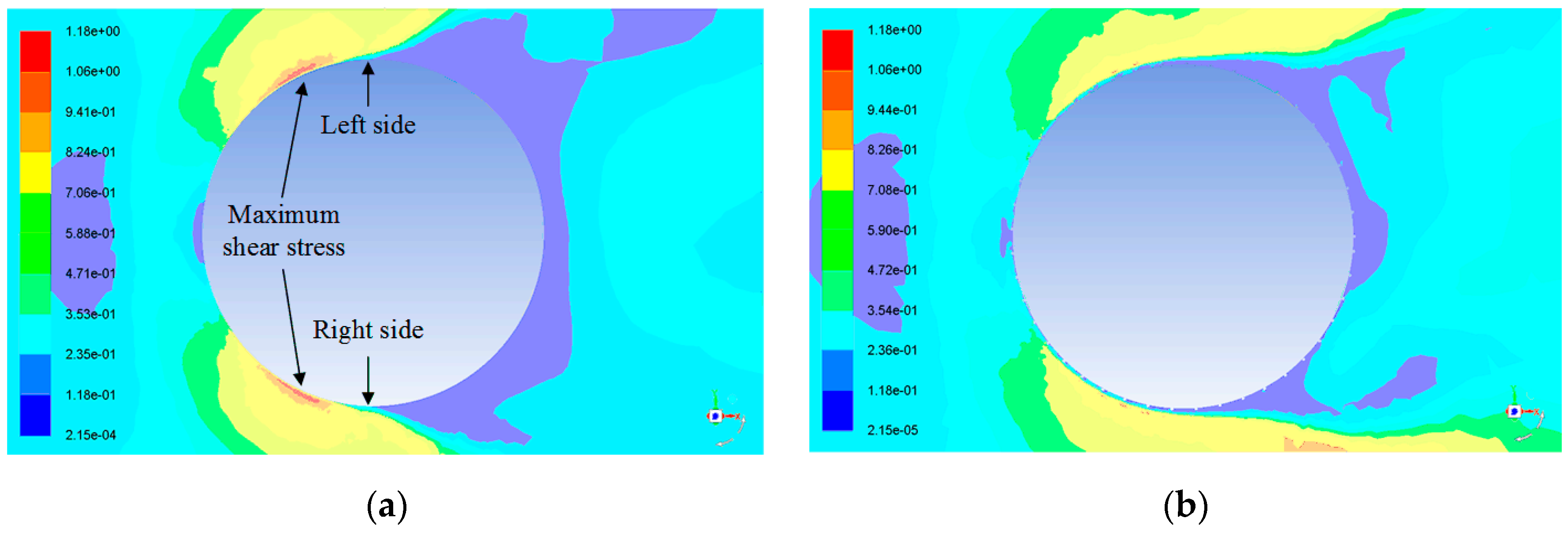

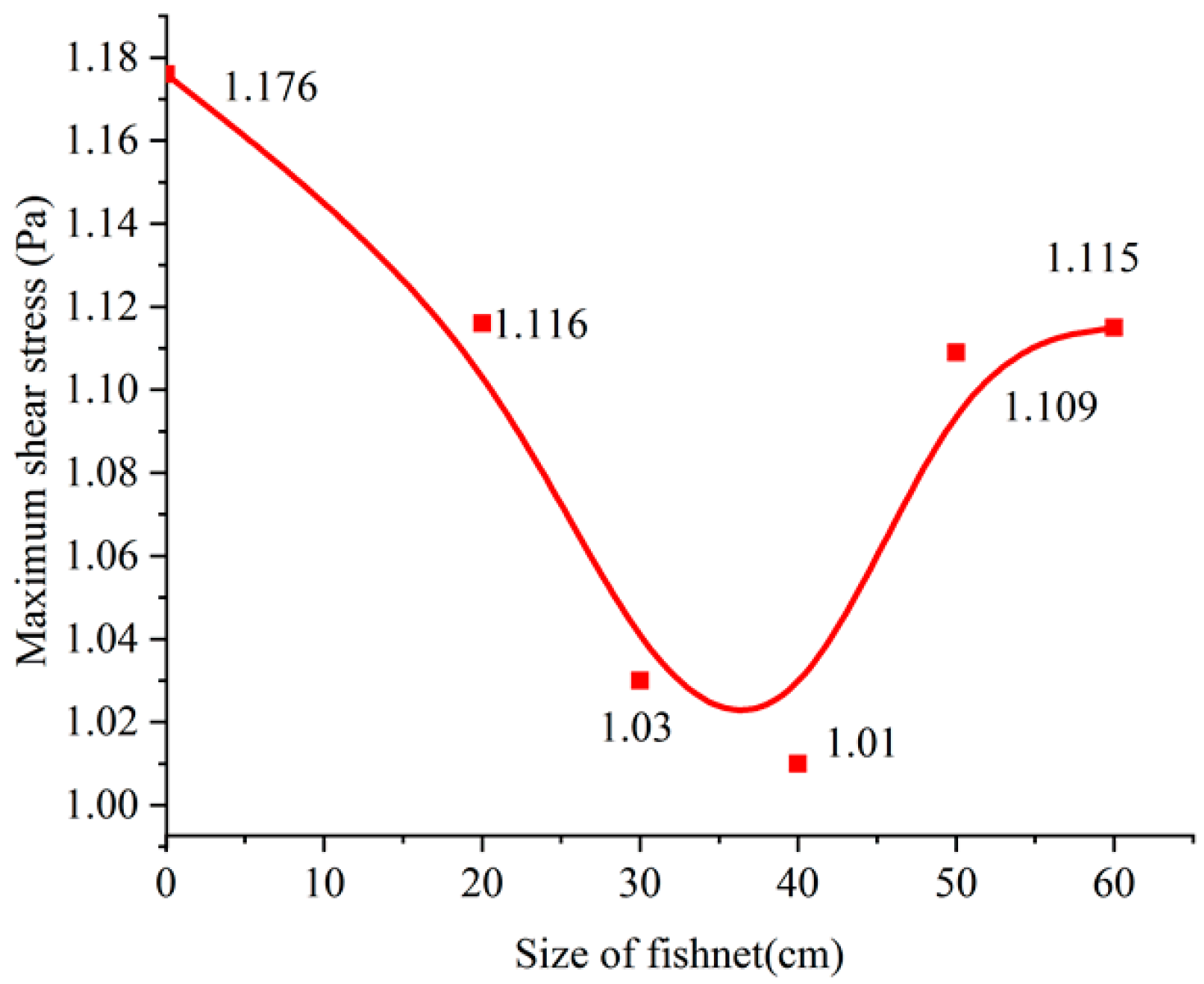
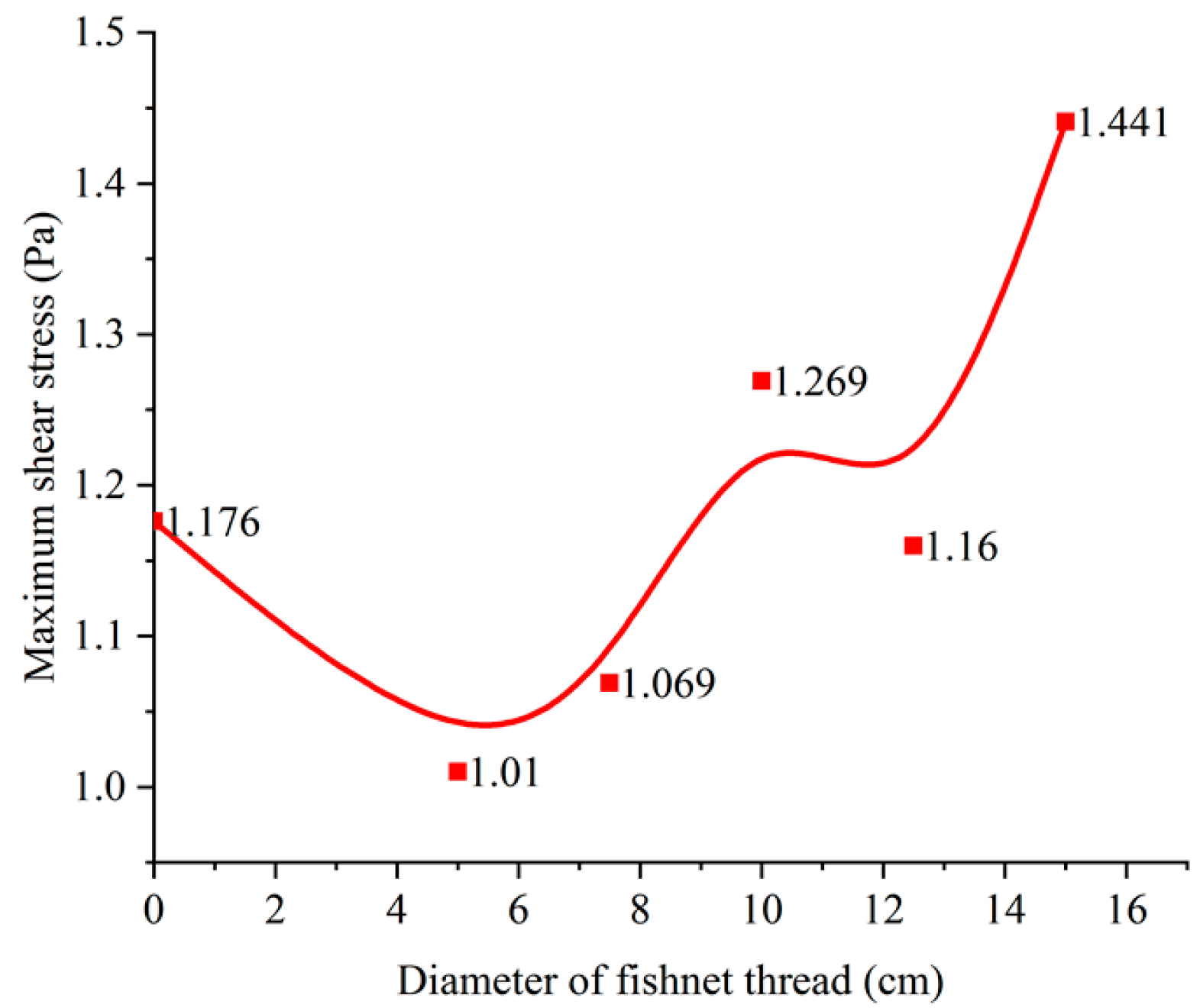


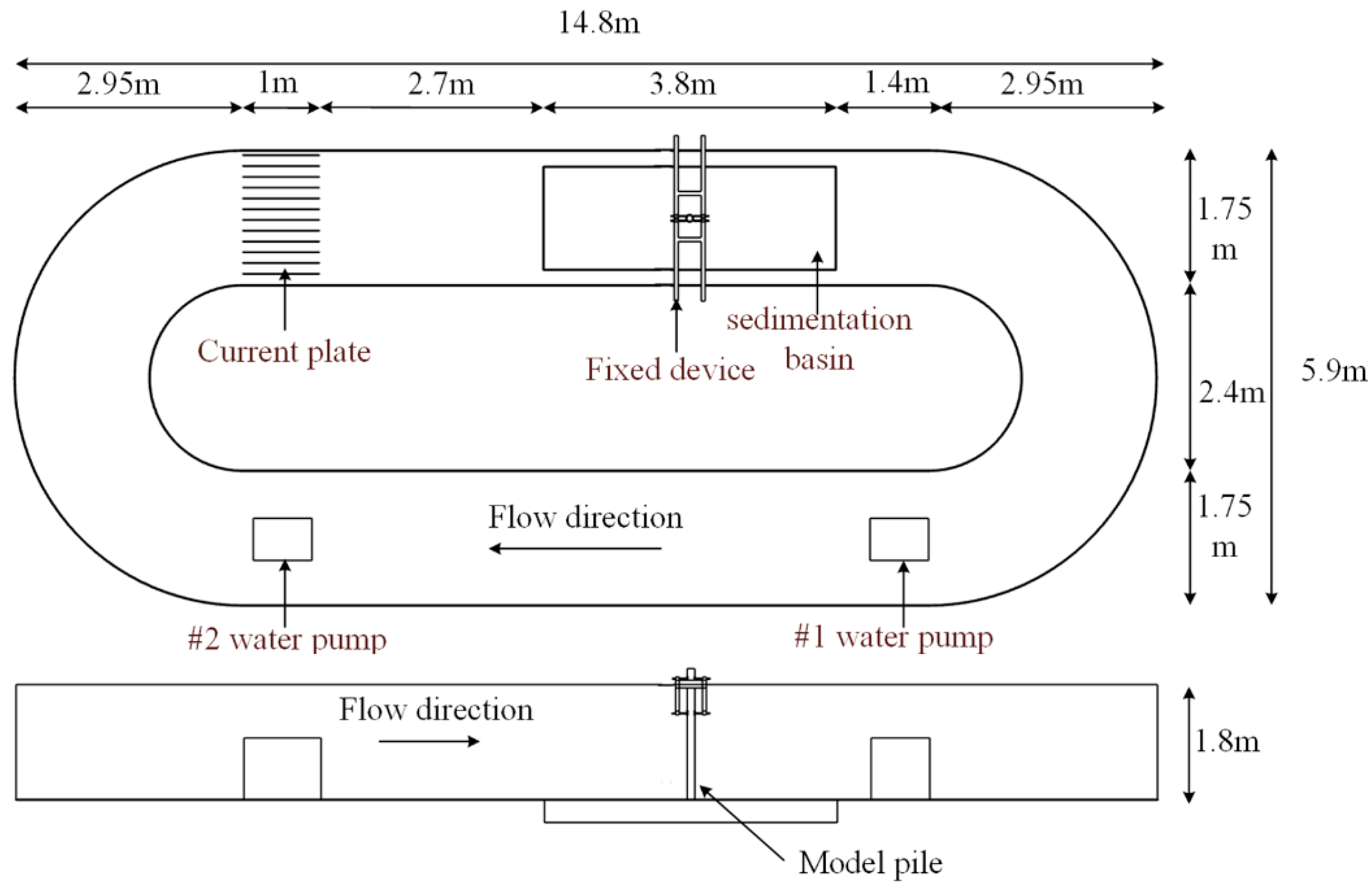
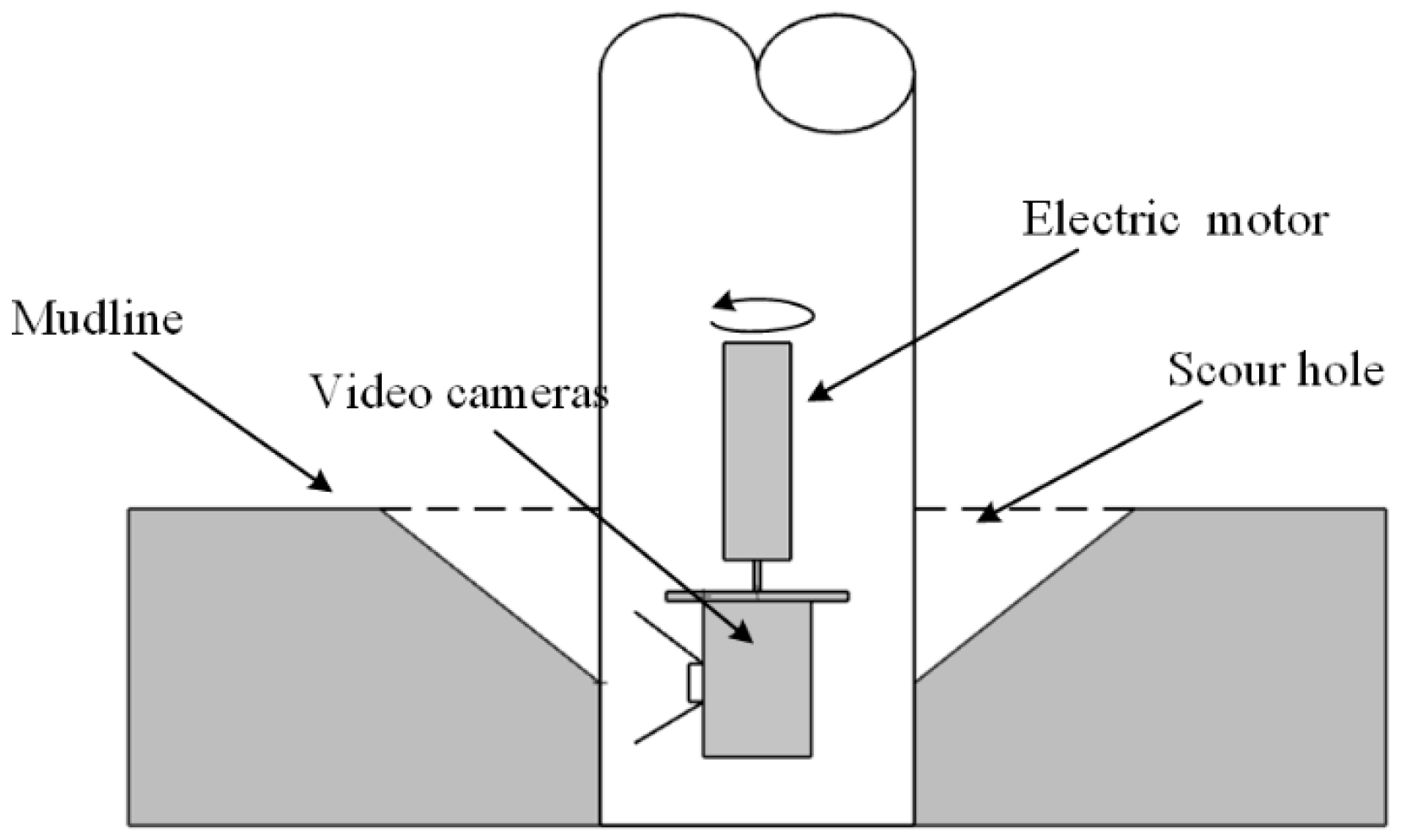
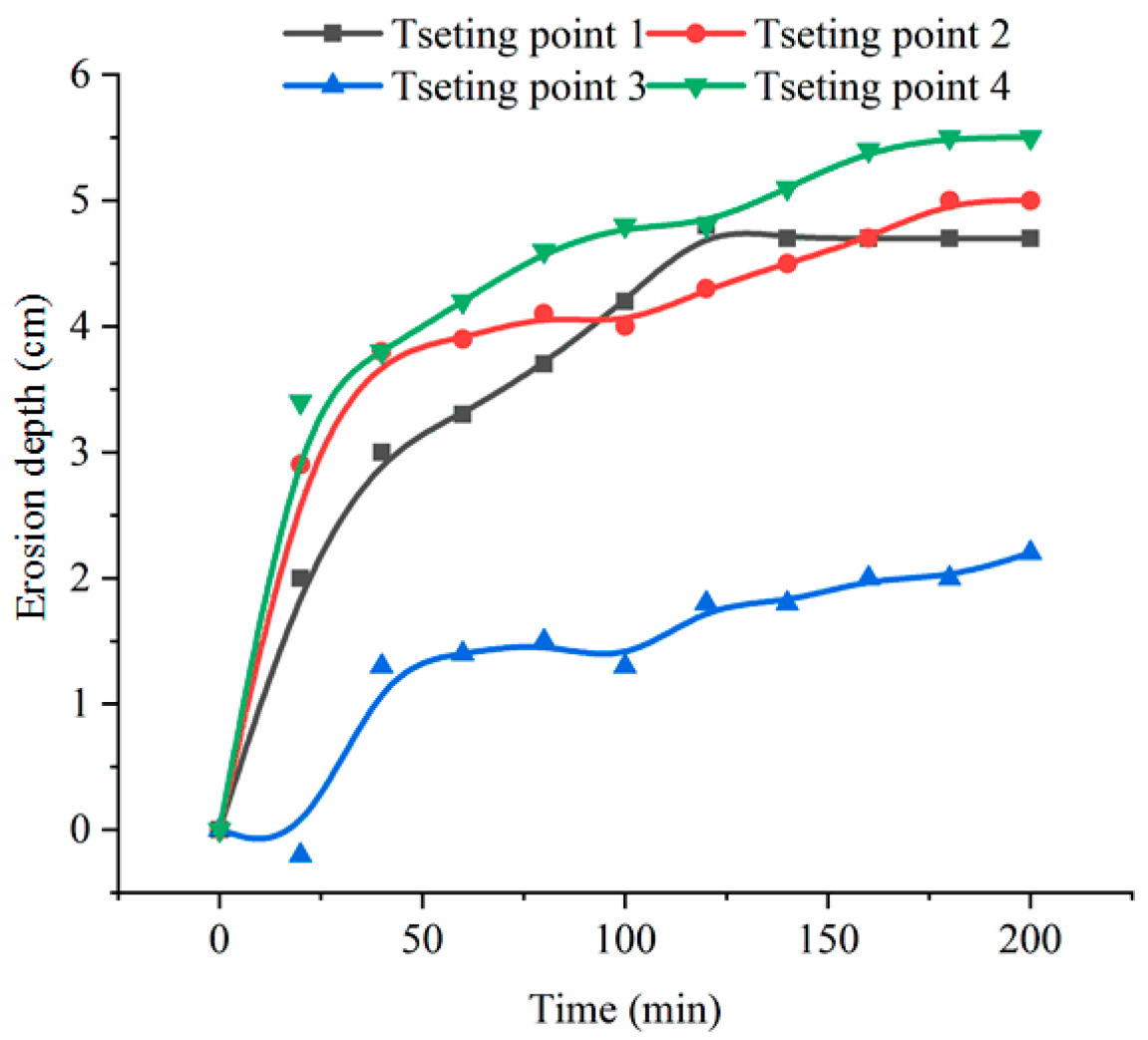


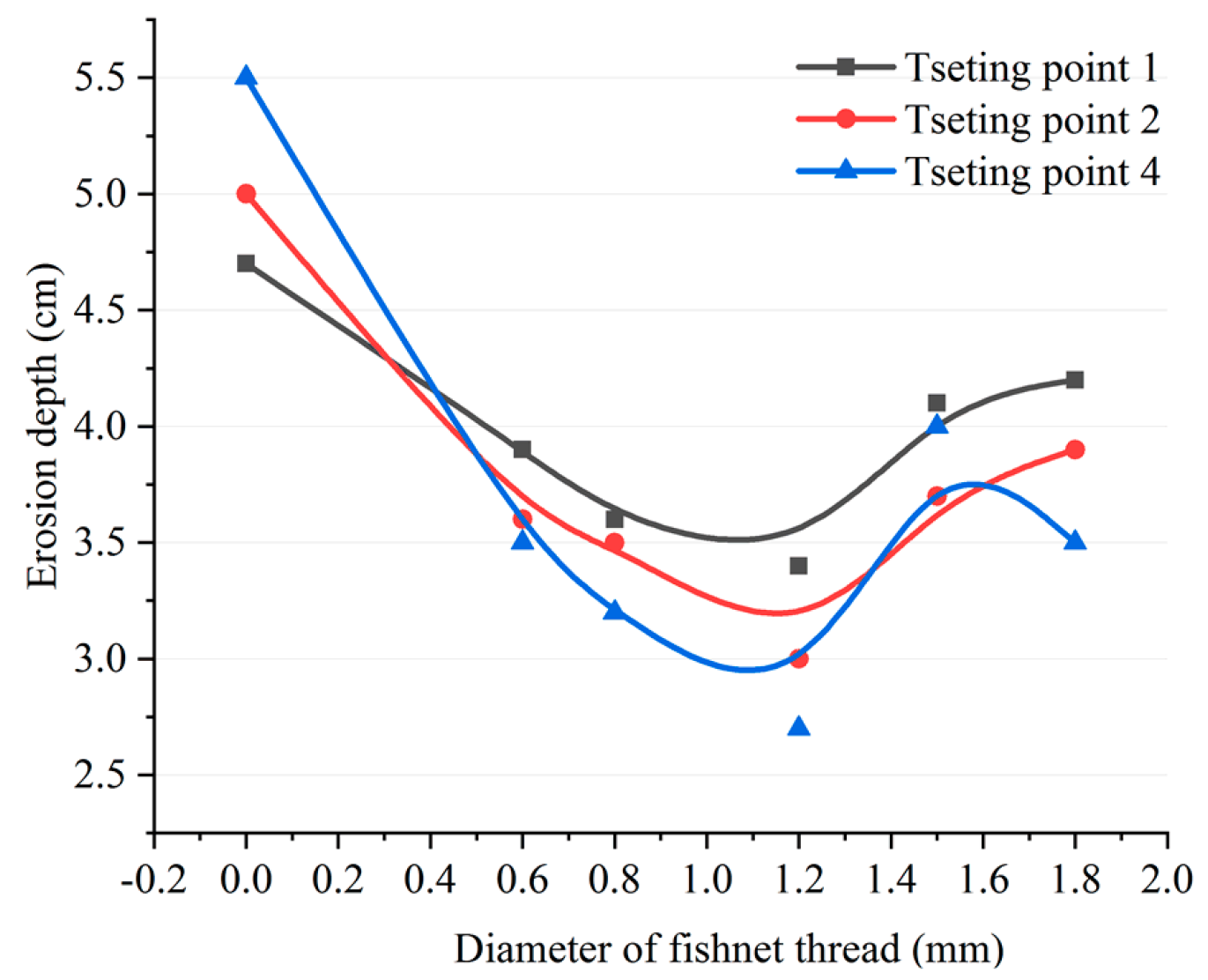
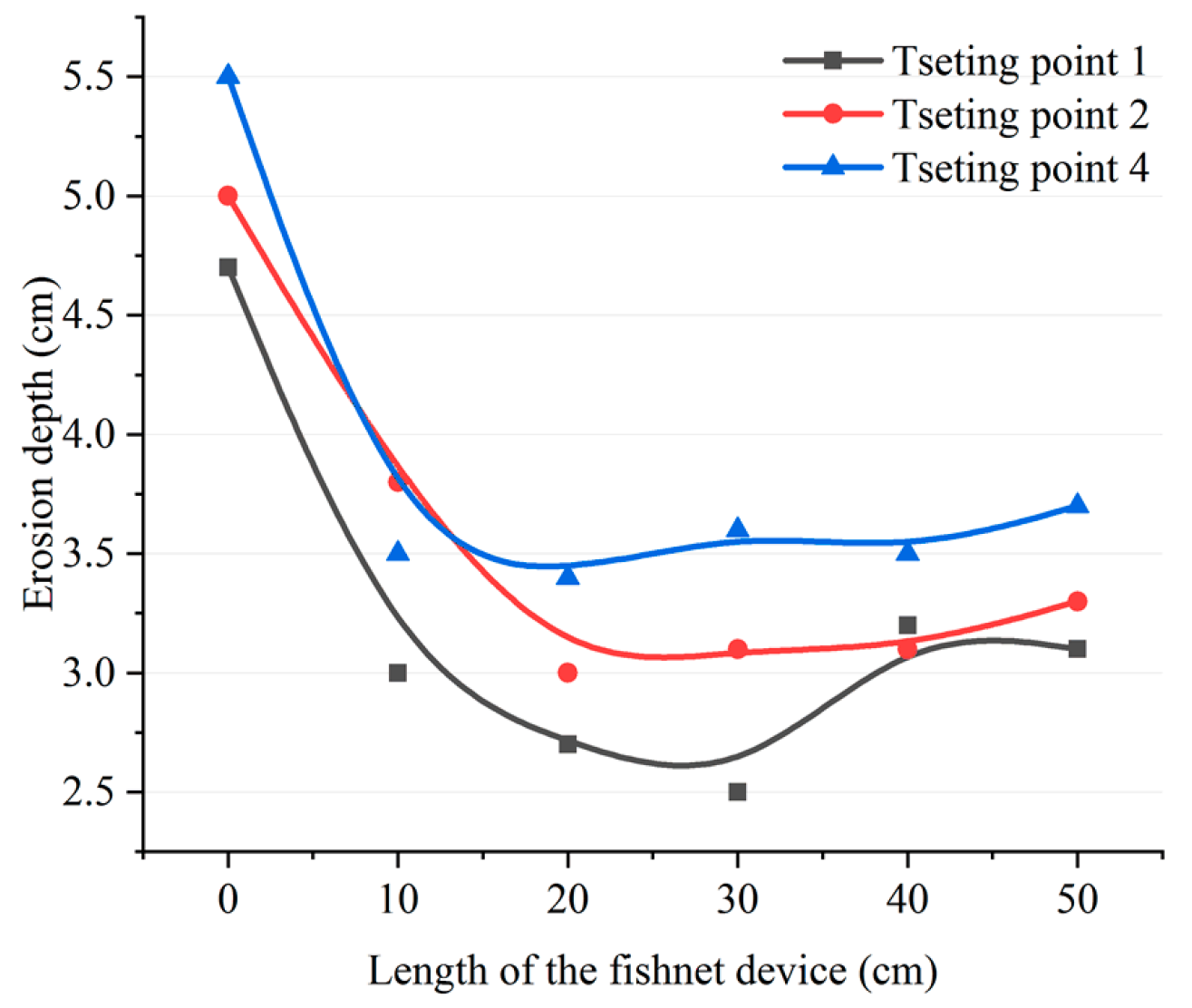
| Parameter | Setting |
|---|---|
| Size function | Curvature |
| Initial size seed | Active assembly |
| Smoothing | Medium |
| Transition | Slow |
| Span angle center | Fine |
| Curvature normal angle | 12° |
| Min size | 0.02 m |
| Max face size | 4 m |
| Max Tet size | 4 m |
| Growth rate | Default (1.20) |
| Use automatic inflation | Program controlled |
| Inflation option | First aspect ratio |
| Fir aspect ratio | 5 |
| Maximum layers | 5 |
| Triangle surface mesher | Program controlled |
| Topology checking | Yes |
| Pinch tolerance | Default (4.5 × 10−3 m) |
| Size of Fishnet | Diameter of Fishnet Thread | Length of Fishnet Device |
|---|---|---|
| l (cm) | d (cm) | H (m) |
| Without fishnet | ----------- | ----------- |
| 20 | 5.0 | 0.5 |
| 30 | 7.5 | 1.0 |
| 40 | 10.0 | 3.5 |
| 50 | 12.5 | 5.0 |
| 60 | 15.0 | 7.5 |
| Size of Fishnet | Diameter of Fishnet Thread | Position of Fishnet above the Seabed |
|---|---|---|
| Without fishnet | ----------- | ----------- |
| 1 cm | 0.6 mm | 10 cm |
| 1.5 cm | 0.8 mm | 20 cm |
| 2 cm | 1.2 mm | 30 cm |
| 2.5 cm | 1.5 mm | 40 cm |
| 3 cm | 1.8 mm | 50 cm |
| Testing Point | Erosion Depth before Using “Fishnet” (cm) | Erosion Depth after Using “Fishnet” (cm) | Reduction Rate (%) |
|---|---|---|---|
| 1 | 4.7 | 4.2 | 10.64 |
| 2 | 5.0 | 3.9 | 22.00 |
| 4 | 5.5 | 3.5 | 36.36 |
© 2019 by the authors. Licensee MDPI, Basel, Switzerland. This article is an open access article distributed under the terms and conditions of the Creative Commons Attribution (CC BY) license (http://creativecommons.org/licenses/by/4.0/).
Share and Cite
Yang, B.; Wei, K.; Yang, W.; Li, T.; Qin, B.; Ning, L. A Feasibility Study for Using Fishnet to Protect Offshore Wind Turbine Monopile Foundations from Damage by Scouring. Appl. Sci. 2019, 9, 5023. https://doi.org/10.3390/app9235023
Yang B, Wei K, Yang W, Li T, Qin B, Ning L. A Feasibility Study for Using Fishnet to Protect Offshore Wind Turbine Monopile Foundations from Damage by Scouring. Applied Sciences. 2019; 9(23):5023. https://doi.org/10.3390/app9235023
Chicago/Turabian StyleYang, Bo, Kexiang Wei, Wenxian Yang, Tieying Li, Bo Qin, and Liwei Ning. 2019. "A Feasibility Study for Using Fishnet to Protect Offshore Wind Turbine Monopile Foundations from Damage by Scouring" Applied Sciences 9, no. 23: 5023. https://doi.org/10.3390/app9235023
APA StyleYang, B., Wei, K., Yang, W., Li, T., Qin, B., & Ning, L. (2019). A Feasibility Study for Using Fishnet to Protect Offshore Wind Turbine Monopile Foundations from Damage by Scouring. Applied Sciences, 9(23), 5023. https://doi.org/10.3390/app9235023






